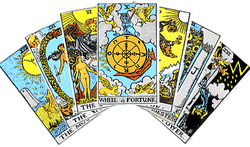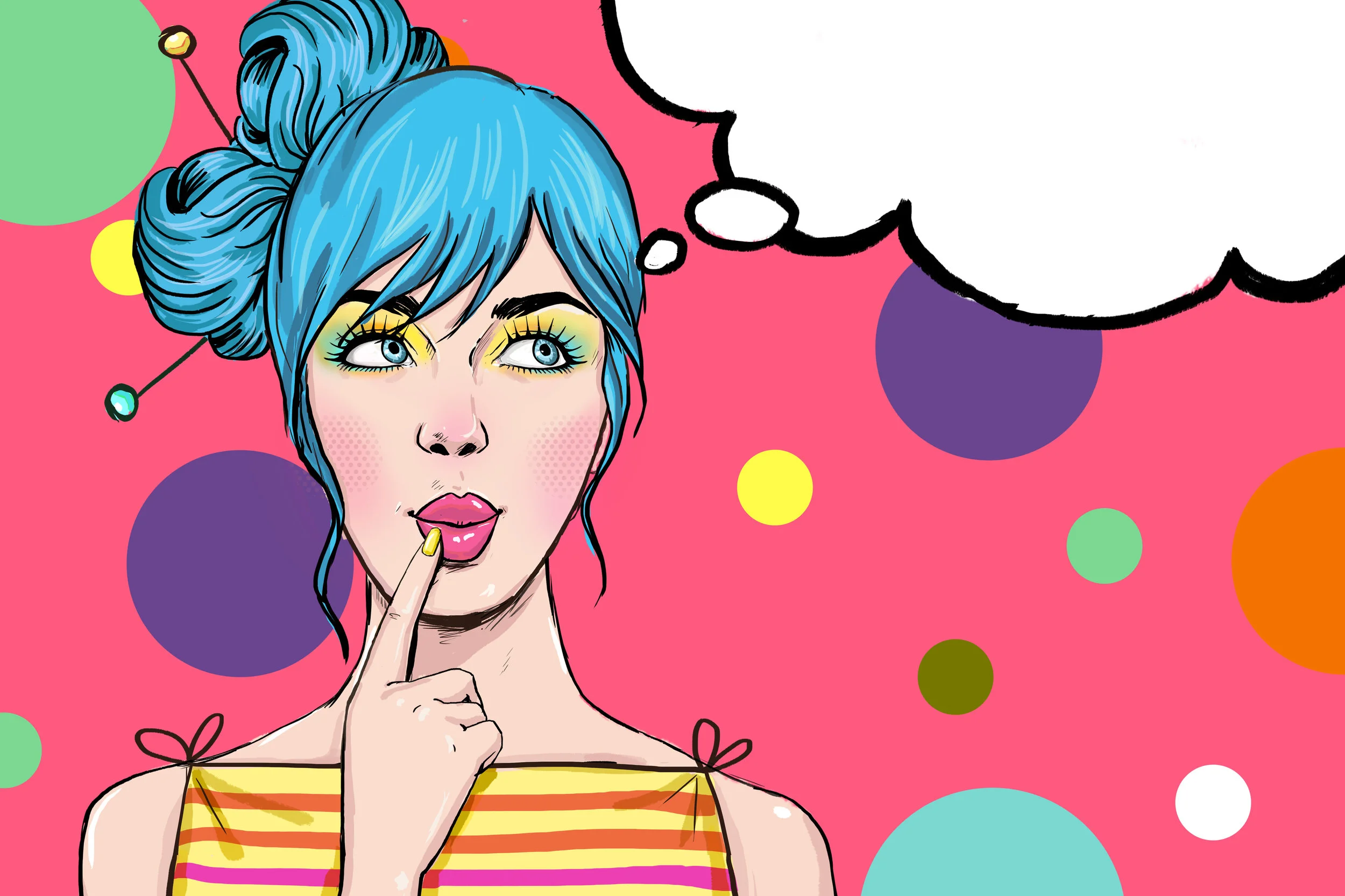
Welcome to my Community Blog for tarot enthusiasts.
Anyone with an interest in tarot, be they student, artist, collector, writer, teacher or reader, is welcome to
to include here.
Can a Tarot Practice Become Unhealthy?
Fear of tarot is a thing, even amongst spiritual people and diviners. Most of that fear is borne of religious prejudice, superstition, or simple misunderstanding.
The truth is that for most people the process of having tarot readings, reading tarot and studying tarot is beneficial in many ways.
Can a Tarot Practice Become Unhealthy?
Fear of tarot is a thing, even amongst spiritual people and diviners. Most of that fear is borne of religious prejudice, superstition, or simple misunderstanding.
The truth is that for most people the process of having tarot readings, reading tarot and studying tarot is beneficial in many ways.
Working with a great tarot professional can give perspective, understanding, strategy, goals and encouragement, as well as a sense of spiritual connection and hope for the future.
Studying tarot, and reading for oneself, can instill spiritual grounding and connect us to our inner guidance.
I firmly believe that tarot can help pretty much everyone in one way of the other.
There are times, however, when a tarot practice can become unhealthy, or at least unhelpful. This can be made worse by tarotists who refuse to acknowledge this possibility and don’t want to work to find ways to mitigate these potential pitfalls.
The important thing to remember is that, aside from being a trump-taking card game, tarot is a helpful creative and spiritual tool. That’s right, a tool, like a stove, a hammer or a curling iron. Tarot in and of itself can’t be evil, can’t be harmful and can’t be unhealthy. Tarot is simply cardboard and ink, art and symbolism. You might get a paper cut, but that is the only harm tarot can do you.
Yet, the way we use a tool matters. A hammer can be used to build a house or commit a murder. Tarot can’t be unhealthy, but we can use tarot in unhealthy ways.
Here are three tarot-related behaviors to watch out for in yourself, your clients and your friends.
1. Psychic Addiction
Psychic addiction happens when we rely on cards and readers to tell us what we want to hear rather than accepting what’s really going on in our lives. We shop for readers who will give us the rosy picture of the future we desire. We interpret our own cards to support our fantasies. Very often psychic addiction happens when we pay too much attention to the predictive aspect of psychic work, rather than digging in to the cards for perspective and strategy.
Unlike many other addictions, psychic addicts don’t necessarily need to completely avoid readings in order to recover, they simply need to change their behaviors and expectations. Very often, psychic addiction is brought about by anxiety that is undiagnosed or untreated. Once that problem is taken care of a person can generally find the helpful benefits of divination without taking it to an unhealthy place.
2. Intense Anthropomorphism of Tarot
Let’s face it, we all personify the cards a bit. “What did the cards say?” “My cards are being saucy today!” “The cards never lie!” These are things we tarotists say. However, there is a line between understanding tarot as a tool of communication and believing that we are communicating with cardboard. When we start ascribing a sense of self-awareness to a deck of cards, we lose sight of reality. Tarot should help us understand our reality, not deny it or hide from it. Spirituality must help us make sense of our world rather than help us escape our world.
3. Failing to Use the Right Tools for the Right Job
If you think you might be pregnant, you can get a pregnancy test at any grocery store. If you want to understand the emotional and spiritual ramifications of adding to your family, have a reading.
It’s amazing how often we turn to the cards to give us information that another tool could give us more concretely and easily. At the same time, we often fail to use tarot in the ways it can be most helpful to us – when we are desperate for guidance in decision-making or spiritual understanding
Some other behaviors that concern me include the tendency to be didactic and dogmatic about tarot interpretation. In my experience tarot is most helpful when we give the cards a little wiggle room. Likewise, is the habit some have of making the tarot, or the words of a psychic, their only source of information, rather than adding the voice of spiritual guidance along with the voice of other experts.
Tarot is the most helpful tool I have every had the pleasure to use, and I am grateful to able to use it for myself and my clients. I am happy to see tarot spreading in popularity around the word. In fact, this is something I have prayed for, and worked for. The more people that have access to tarot, the better.
However, if common sense doesn’t accompany our tarot practice, there is always the possibility that we will turn our wellness practice of divination into something more sinister. As long as we stay grounded in reality and disciplined in the way we use our psychic resources, I believe we can avoid those behaviors that can create unhealthy practices in divination. Instead, we can use those resources to stimulate our growth, heal our wounds and plan for the very best future possible.
Advice for Tarot Readers: Embrace the Blank Space
Recently a student and I were discussing ways to begin a tarot reading. I’m not talking about invocation or creating sacred space. I’m talking about the very first thing you say to your querent after you begin the divination.
Recently a student and I were discussing ways to begin a tarot reading. I’m not talking about invocation or creating sacred space. I’m talking about the very first thing you say to your querent after you begin the divination.
Some of us begin divination looking at only one card. Others prefer to take in an entire spread before speaking. Regardless of reading style, we all must begin the reading somewhere.
When musing about professional tarot reading, one of the things that always strikes me is that our job is impossible to prepare for. Sure, we can rest, we can shuffle, we can put on a pretty dress. Yet there is never anything to prepare us for what might come up in a reading, and we should never try to anticipate how a reading will go.
Regardless of what we know about the cards, despite how psychic we may be, at the beginning of every reading we know nothing, and we have to say something.
Some readers simply begin with a description of the first card laid out and proceed in a card-by-card fashion. Some clients prefer this method, and sometimes the cards that appear in the spread beg to be read that way.
While card-by-card reading isn’t my favorite technique, I firmly believe that every reader should be able to give a great card-by-card reading. The benefit of the card-by-card technique is you always start with the first card, so you always have a clue about what your opening line will be.
The first sentence in an oracular session is important, I think. That first statement can put the client at ease or make your client more nervous. That first sentence can strengthen the energetic connection between you and your client or cause the client to resist connecting with you.
The reason I don’t love card-by-card reading is that it limits what my opening line will be. My favorite way to open a reading, and the way that feels most authentic to me, is to lay out the opening spread and take in the cards, and the energy, for a moment.
This can be a terrifying moment, because it is an unpredictable blank space that we are under pressure to fill. Yet this is also a moment full of magick, and full of promise.
If we can embrace that blank space without fear and open ourselves to the Universal wisdom that flows through the cards, and through us, we will find the best way to open the reading, every time.
Sometimes I begin with a laundry list of things I see going on, in no order of importance. Sometimes there is a specific department of life that seems amiss. Sometimes there is a general energy that comes off the spread, and that is where I start.
I think the important points are these. First, the way we begin a reading affects the energy of the entire session. Second, we need to have in our toolbox a variety of techniques for opening a reading. Third, there is immense pressure in those first moments to say the thing that will create the best energy for the reading to proceed. We do that best when we welcome the scary blank space and trust our intuition and the cards to fill that blank space with wisdom.
Why do I love Tarot?

Why do I love Tarot?
Because Tarot is about stories. It's about creating a life where you walk with wanderers, magicians, and kings. Where you see the big, powerful themes of your life, and the small but poignant scenes that make up who you are. Where you're able to review your life's story and see how you want it to be told.
Because it's about possibilities. Because I can take a look at seven cards laid out in a pattern and see myself reflected back at me - parts of me I'd never considered before, and options I'd never imagined. Because when we're bogged down by too many choices, or by a sense of being overwhelmed and lost, we're able to illuminate our path and see one direction where it might lead.
Because Tarot is art. It's taking 78 ideas, 78 moments from life, and seeing the myriad ways those images have evolved and changed from person to person, theme to theme, artist to artist. It's seeing the unique lens through which each deck views our lives, and then learning about yourself through which images speak to you.
Because the world needs magick. Because we're magick, and the sheer power and beauty of peering into the unknown and calling up what we find there is something we're never too old for.
------
Kim DeCina is a professional Tarot reader and life coach in the South Florida area. She's just released a six week e-course, Tarot Journeys: Of Mentors and Magic Wands, the first of four planned courses that teach the Major Arcana as guides for healing and personal development.



